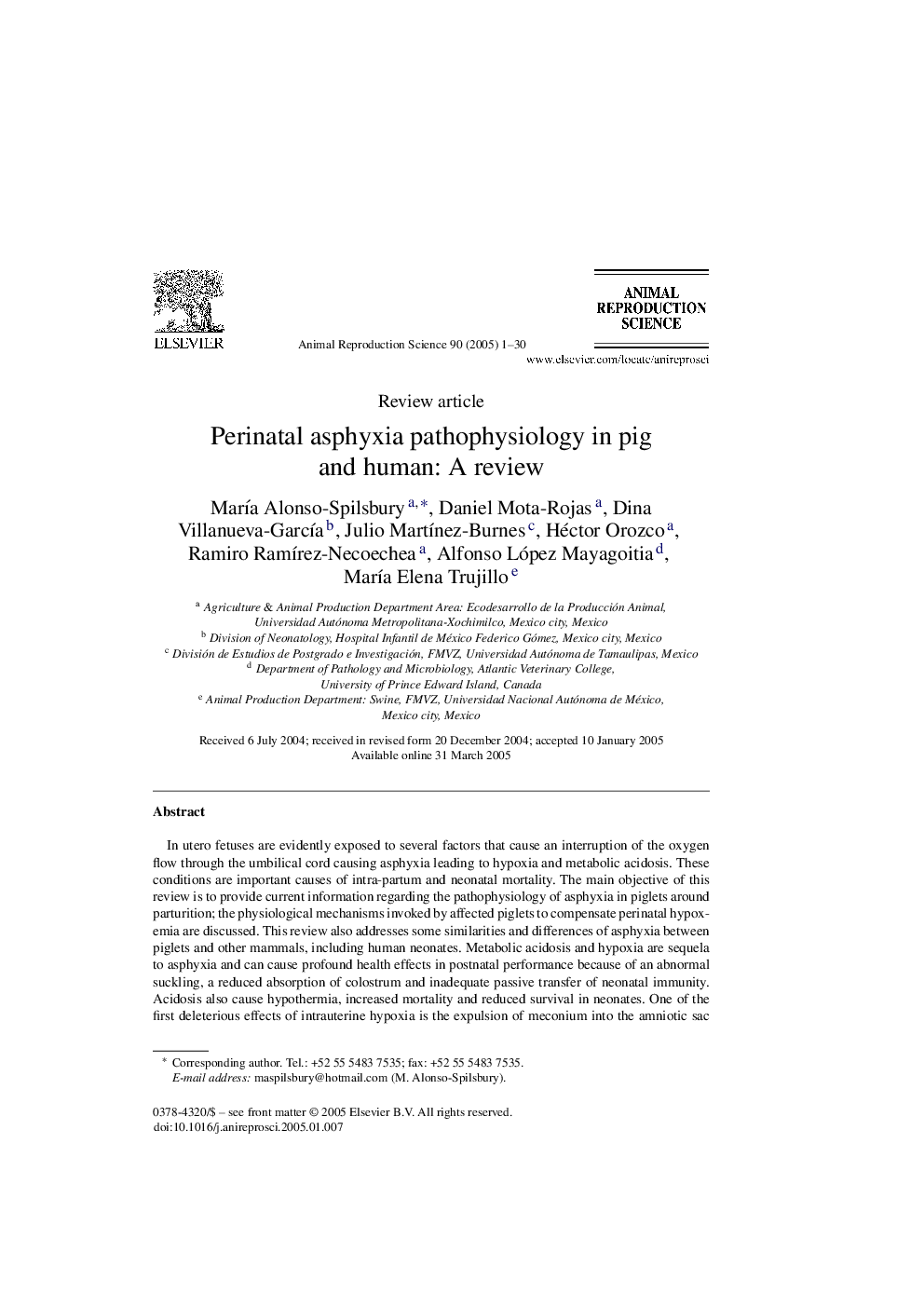| Article ID | Journal | Published Year | Pages | File Type |
|---|---|---|---|---|
| 9900225 | Animal Reproduction Science | 2005 | 30 Pages |
Abstract
In utero fetuses are evidently exposed to several factors that cause an interruption of the oxygen flow through the umbilical cord causing asphyxia leading to hypoxia and metabolic acidosis. These conditions are important causes of intra-partum and neonatal mortality. The main objective of this review is to provide current information regarding the pathophysiology of asphyxia in piglets around parturition; the physiological mechanisms invoked by affected piglets to compensate perinatal hypoxemia are discussed. This review also addresses some similarities and differences of asphyxia between piglets and other mammals, including human neonates. Metabolic acidosis and hypoxia are sequela to asphyxia and can cause profound health effects in postnatal performance because of an abnormal suckling, a reduced absorption of colostrum and inadequate passive transfer of neonatal immunity. Acidosis also cause hypothermia, increased mortality and reduced survival in neonates. One of the first deleterious effects of intrauterine hypoxia is the expulsion of meconium into the amniotic sac leading to meconium staining of the skin, and in severe cases, meconium aspiration into the lungs. Even though there have been technological changes and improvements in husbandry, piglet mortality due to asphyxia remains a major problem. One potential alternative to reduce neonatal mortality in pigs is the monitoring of fetal stress during birth and the implemention of strategies such as the Apgar score, that is often used in human pediatrics. It is also important to consider the physiological, behavioral and biochemical changes that take place during parturition which subsequently impact the vitality, maturity and development of neonatal pigs. Understanding the pathophysiology of fetal hypoxia should help practitioners and farmers implement more effective delivery techniques aimed at reducing neonatal mortality and improving postnatal performance.
Related Topics
Life Sciences
Agricultural and Biological Sciences
Animal Science and Zoology
Authors
MarÃa Alonso-Spilsbury, Daniel Mota-Rojas, Dina Villanueva-GarcÃa, Julio MartÃnez-Burnes, Héctor Orozco, Ramiro RamÃrez-Necoechea, Alfonso López Mayagoitia, MarÃa Elena Trujillo,
